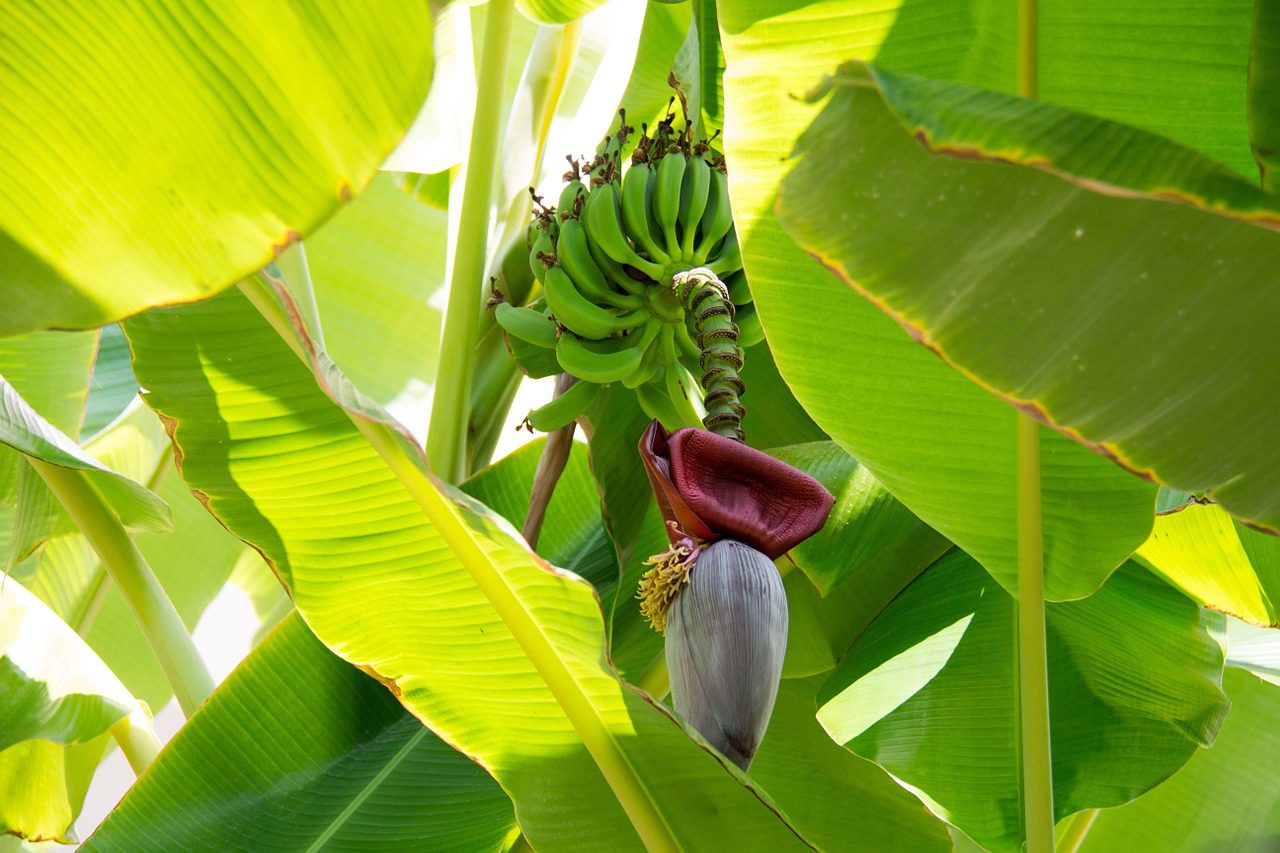Hey there! Have you ever wondered why banana plants are so special in Ayurveda, the ancient Indian system of medicine? These plants are like natural treasure chests filled with health goodies! Ayurveda teaches us that every part of the banana plant has something amazing to offer for our wellbeing.
In Kerala, Planting banana plants is not only considered auspicious but also brings numerous benefits to every household. Once it starts growing, it rapidly expands and produces new shoots near the roots, resulting in the growth of multiple plants from a single one.
From the roots to the fruits, secrets are waiting to be discovered. So, let’s take a journey together and explore the incredible healing powers of the banana plant according to Ayurveda.
The Root System
In Ayurveda, the banana plant roots are valued for their various health benefits. They are known to be cooling in nature, which means they can help to balance excess heat in the body.
Additionally, banana roots are believed to have astringent properties, which can help treat diarrhea and other digestive issues. They are also said to support healthy kidney function and urinary tract health. In Ayurveda, banana roots are sometimes used in herbal remedies to promote overall well-being and balance in the body.
The Stem
The stem of the banana plant holds numerous health benefits and finds various uses in daily life.
Banana stem is rich in dietary fiber, which aids digestion and prevents constipation. It also contains compounds that promote healthy bowel movements, helping to cleanse the digestive system.
Due to its high fiber content and low-calorie count, banana stems can help manage weight by keeping you feeling full for longer periods without adding extra calories.
The soluble fiber in banana stems slows down the absorption of sugar into the bloodstream, which can be beneficial for people with diabetes in managing their blood sugar levels.
The strong and flexible fibers from the outer layers of the banana stem are used in making traditional crafts like baskets, mats, and ropes. You can explore a variety of traditional crafts made from banana stem fibers, such as baskets, mats, and ropes on Amazon.
Banana stems are also used as fodder for livestock due to their nutritional content and digestibility.
Banana stem extract and leaves make excellent natural fertilizers for gardening, providing essential nutrients and promoting plant growth.
The Leaves
Banana leaves are large, broad, and beautiful, but their significance goes beyond aesthetics. In many cultural traditions, banana leaves hold significant ceremonial and symbolic value.
They are commonly used in weddings and religious ceremonies to serve food, symbolizing purity, prosperity, and auspiciousness. In temples, banana leaves are utilized for various rituals and offerings, embodying reverence and respect for nature’s bounty.
They are traditionally used in many cultures as eco-friendly plates, food wrappers, and cooking vessels, ensuring minimal environmental impact compared to plastic or paper alternatives. Additionally, banana leaves are rich in nutrients and antioxidants, making them beneficial for health when incorporated into certain culinary dishes.
Beyond their utility, banana leaves offer a surprising array of health benefits. Packed with essential nutrients and antioxidants, they impart a subtle, earthy flavor to dishes while infusing them with additional nutritional value.
When used as a cooking vessel, banana leaves can enhance the aroma and flavor of foods, creating a uniquely satisfying culinary experience.
The Flower

The banana flower, also known as the banana blossom or banana heart, is the large, teardrop-shaped, purple, or maroon-colored bud that hangs at the end of a cluster of bananas on a banana plant. It is technically an inflorescence, or a group of flowers clustered together.
The banana flower consists of tightly packed layers of bracts, each layer protecting smaller female flowers that eventually develop into bananas. The outer bracts are typically large and thick, while the inner bracts are smaller and more delicate.
Before the bananas begin to develop, the banana flower can be harvested and used as a culinary ingredient in various cuisines worldwide.
It has a unique taste and texture, often described as slightly bitter and with a hint of sweetness. The flavor profile is somewhat similar to artichokes or hearts of palm.
While it may seem unconventional, banana flowers are edible and highly nutritious. They can be cooked and added to salads, stir-fries, or curries, offering a unique flavor and texture to dishes.
Banana flowers are rich in fiber, potassium, antioxidants, and various vitamins and minerals.
In addition to its culinary uses, the banana flower is also valued for its medicinal properties in traditional medicine systems like Ayurveda. It is believed to have several health benefits, including promoting heart health, improving digestion, and regulating menstrual cycles.
